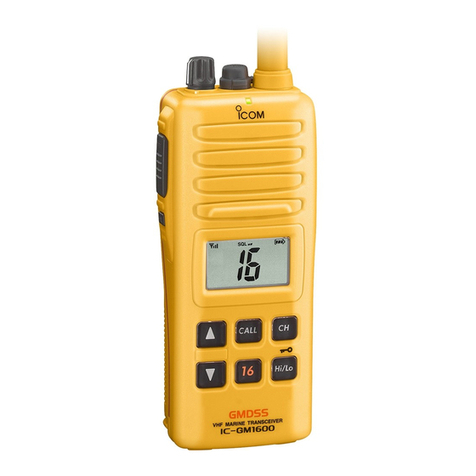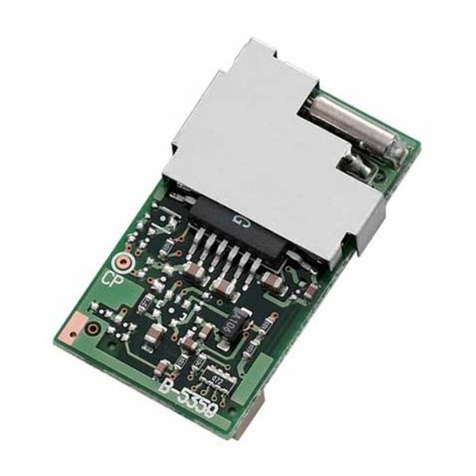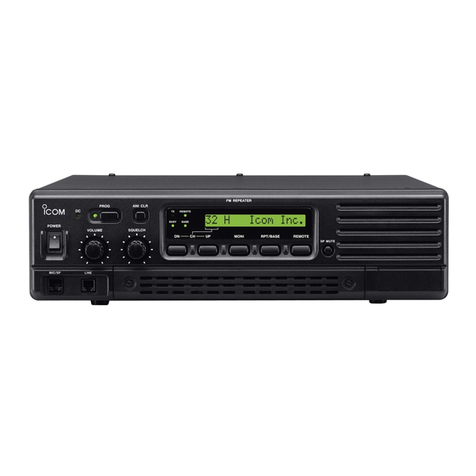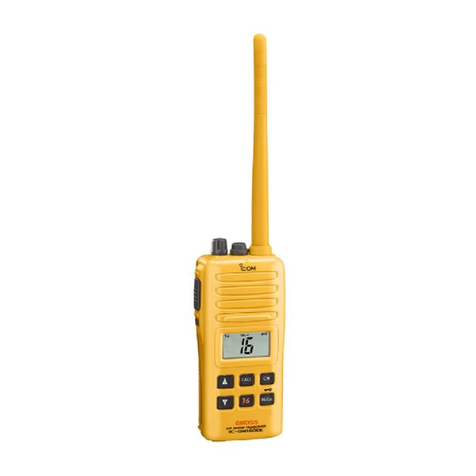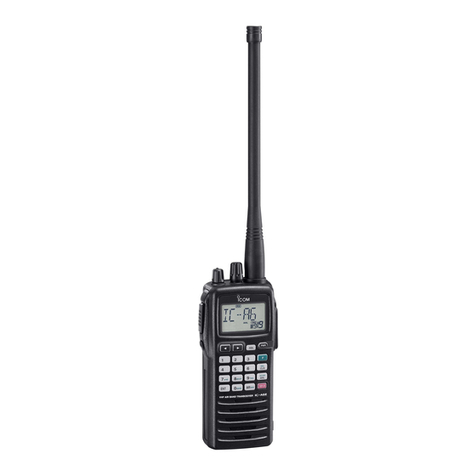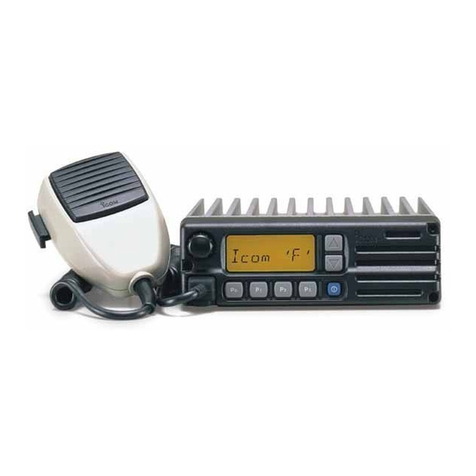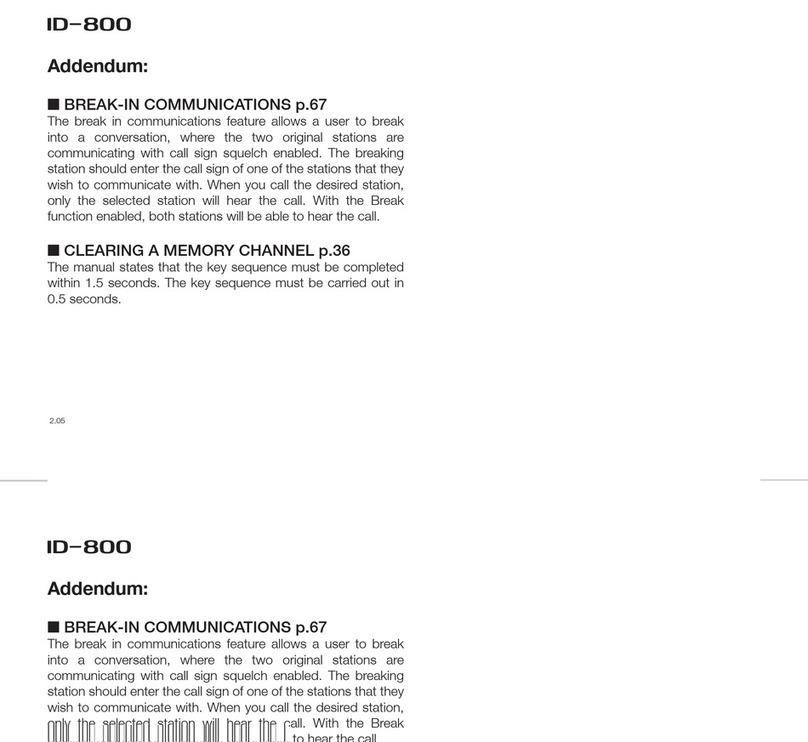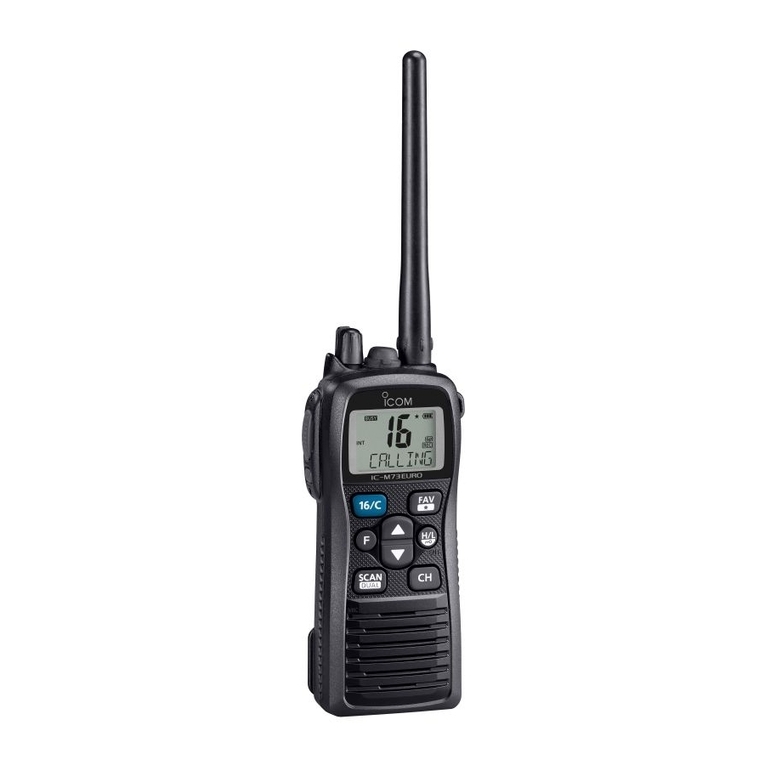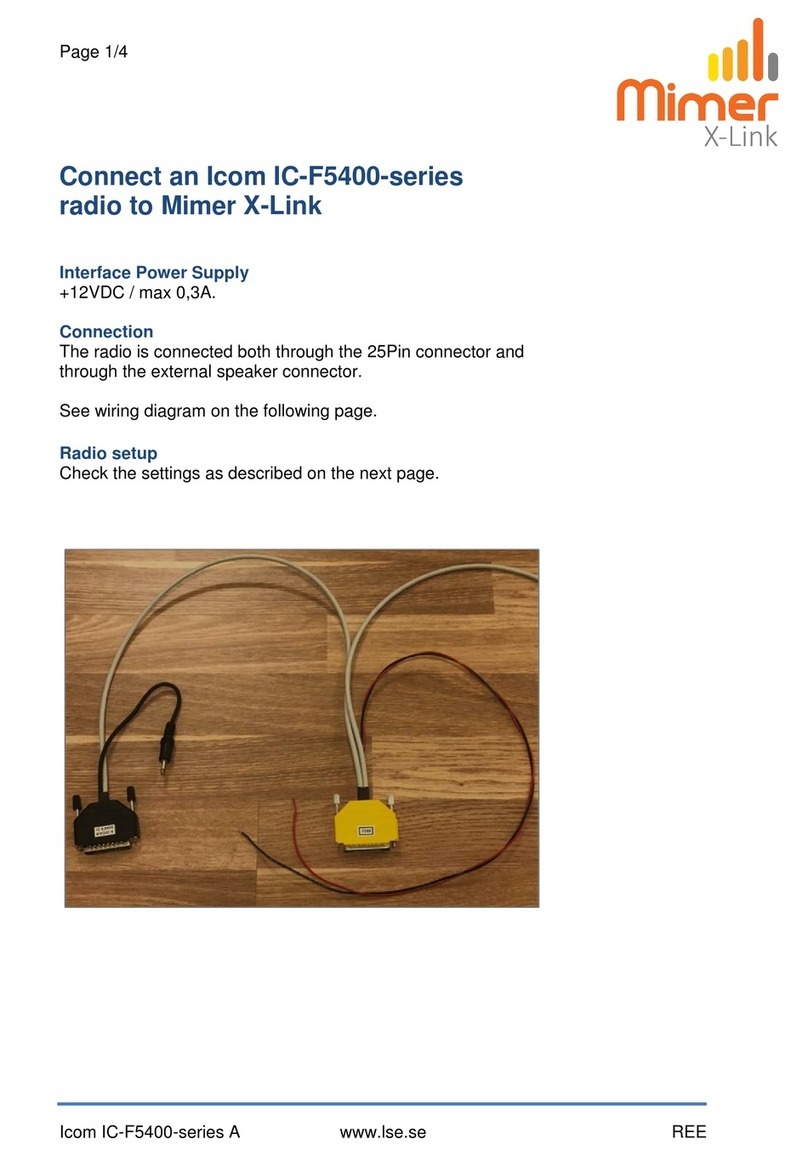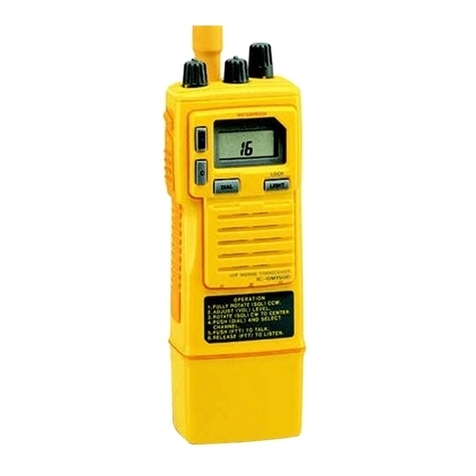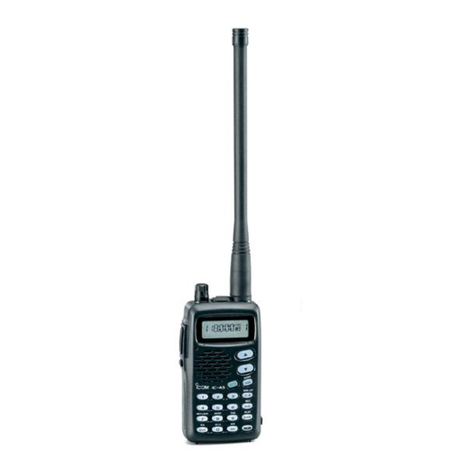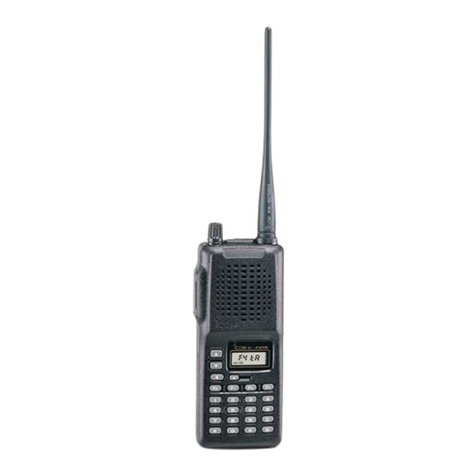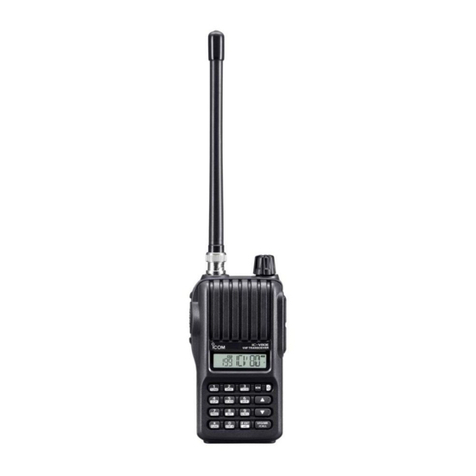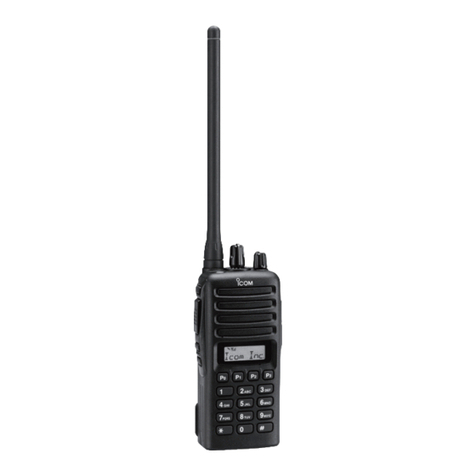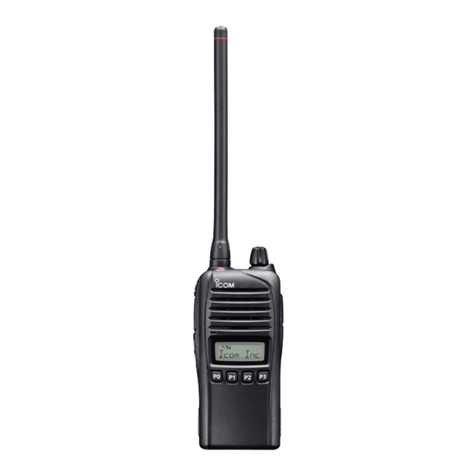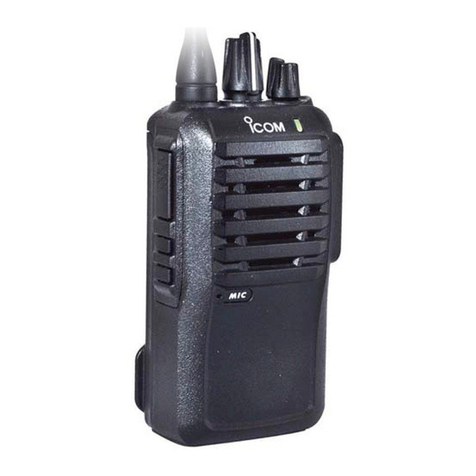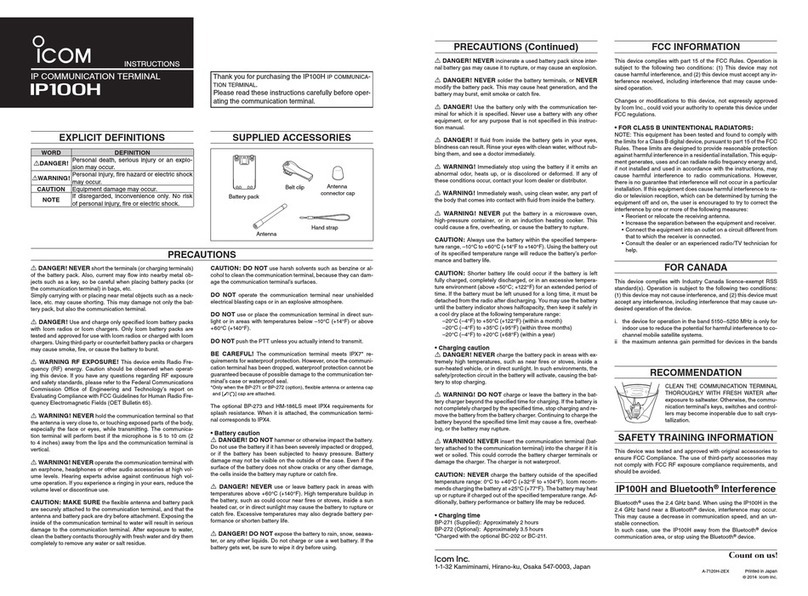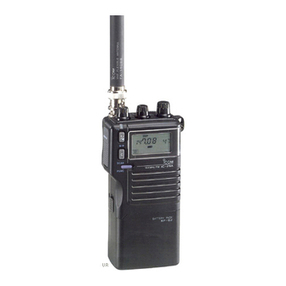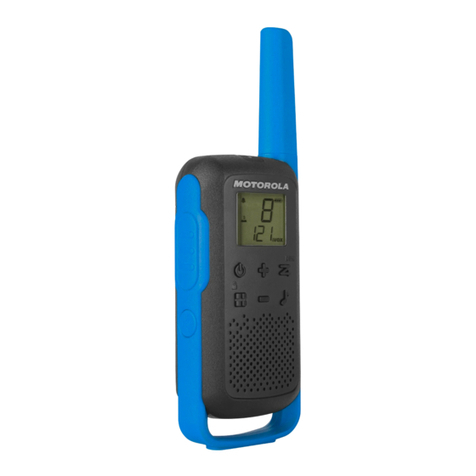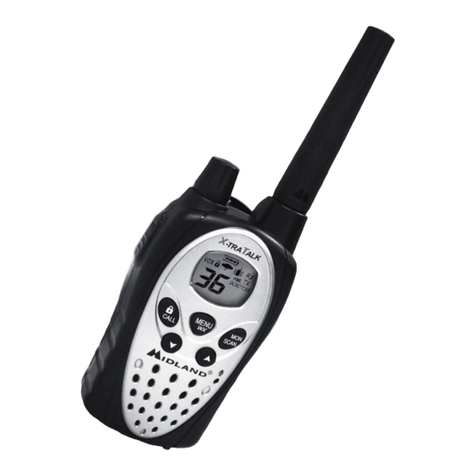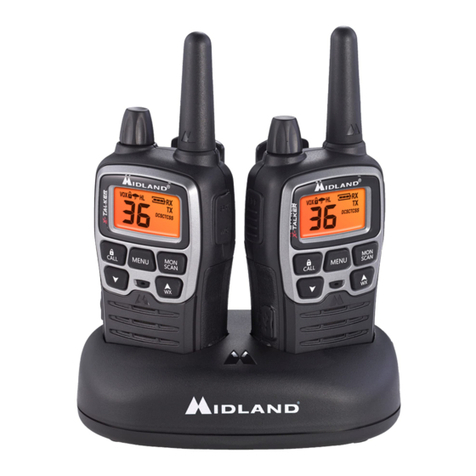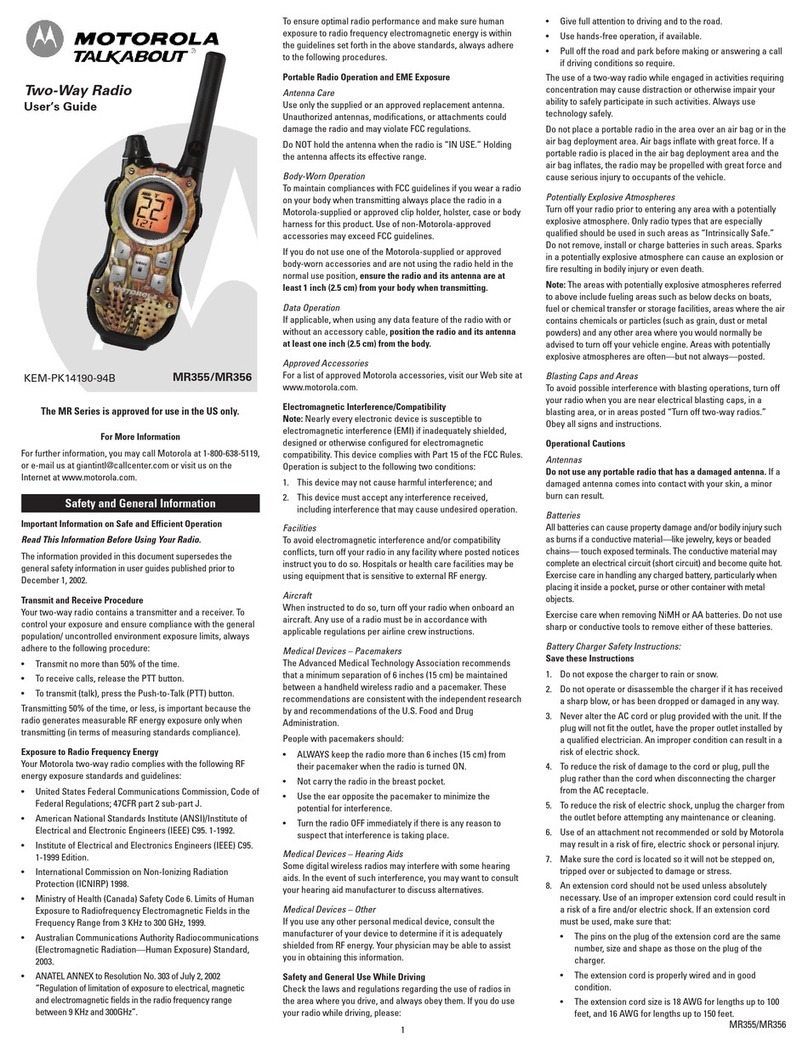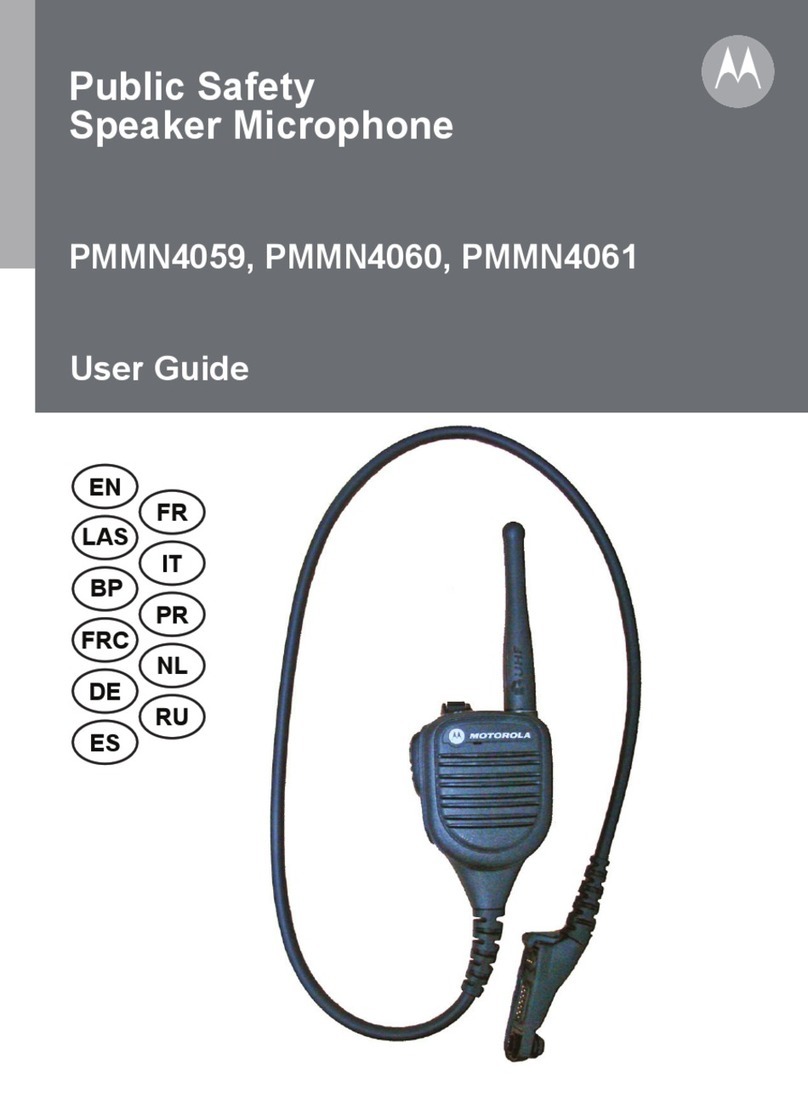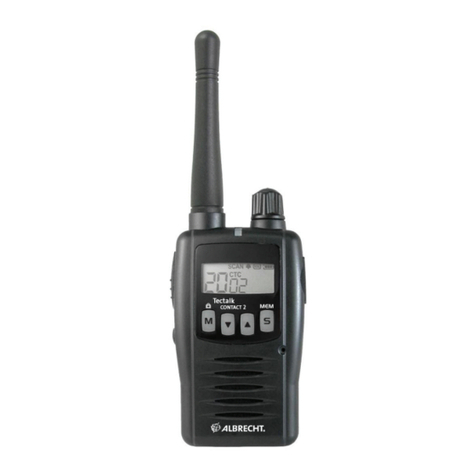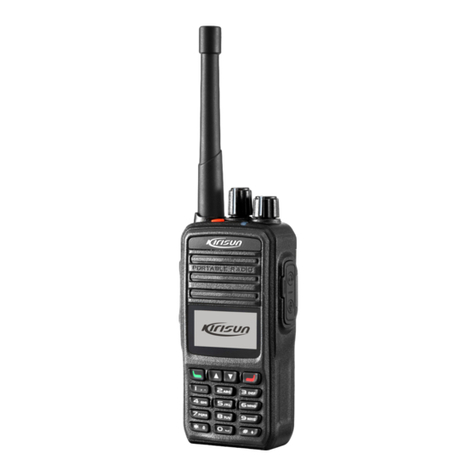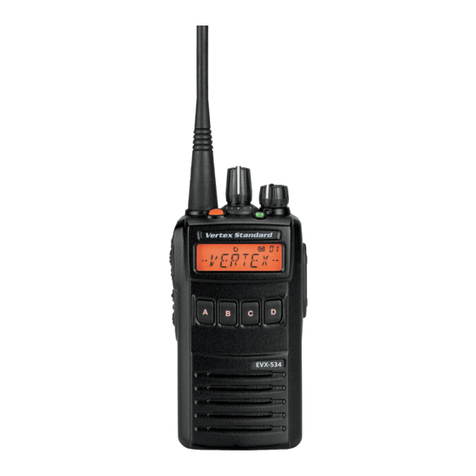
15
4BATTERY CHARGING
■Caution
Misuse of Lithium-ion batteries may result in the following
hazards: smoke, fire, or the battery may rupture.
Misuse can also cause damage to the battery or degrada-
tion of battery performance.
DBattery caution
RDANGER! NEVER short the terminals of the battery pack.
Shorting may occur if the terminals touch metal objects such
as a key, so be careful when placing the packs (or the trans-
ceiver) in bags, and so on. Carry them so that shorting cannot
occur. Shorting may damage not only the pack, but also the
transceiver.
RDANGER! NEVER leave battery packs in places with tem-
peratures above +60˚C. High temperature buildup in the bat-
tery cells, such as could occur near fires or stoves, inside
a sun heated vehicle, or in direct sunlight for long periods
of time may cause the battery cells to rupture or catch fire.
Excessive temperatures may also degrade battery pack’s
performance or shorten the battery cell’s life.
RDANGER! NEVER expose the battery pack to rain, snow,
seawater, or any other liquids. Do not charge or use a wet
battery pack. If the pack gets wet, be sure to wipe it dry be-
fore using. The battery pack itself is not waterproof.
RDANGER! NEVER strike or otherwise impact the battery.
Do not use the battery if it has been severely impacted or
dropped, or if the battery has been subjected to heavy pres-
sure. Battery damage may not be visible on the outside of the
case. Even if the surface of the battery does not show cracks
or any other damage, the cells inside the battery may rupture
or catch fire.
RDANGER! NEVER place battery packs near a fire. Fire or
heat may cause them to rupture or explode. Dispose of used
packs in accordance with local regulations.
RDANGER! NEVER let fluid from inside the battery cells get
in your eyes. If it does, blindness can result. Rinse your eyes
with clean water, without rubbing them, and immediately go
to a doctor.
RDANGER! NEVER put the battery pack in a microwave
oven, high-pressure container, or in an induction heating
cooker. This could cause a fire, overheating, or cause the
battery cells to rupture.
RWARNING! NEVER use the battery pack if it emits an
abnormal odor, heats up, or is discolored or deformed. If any
of these conditions occur, contact your Icom dealer or dis-
tributor.
RWARNING! NEVER Iet fluid from inside the battery cells
come in contact with your body. If it does, immediately wash
with clean water.




















